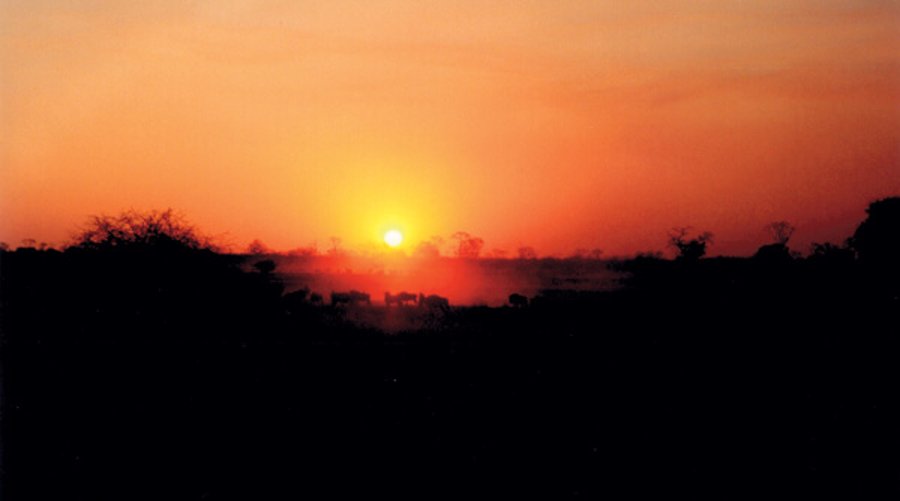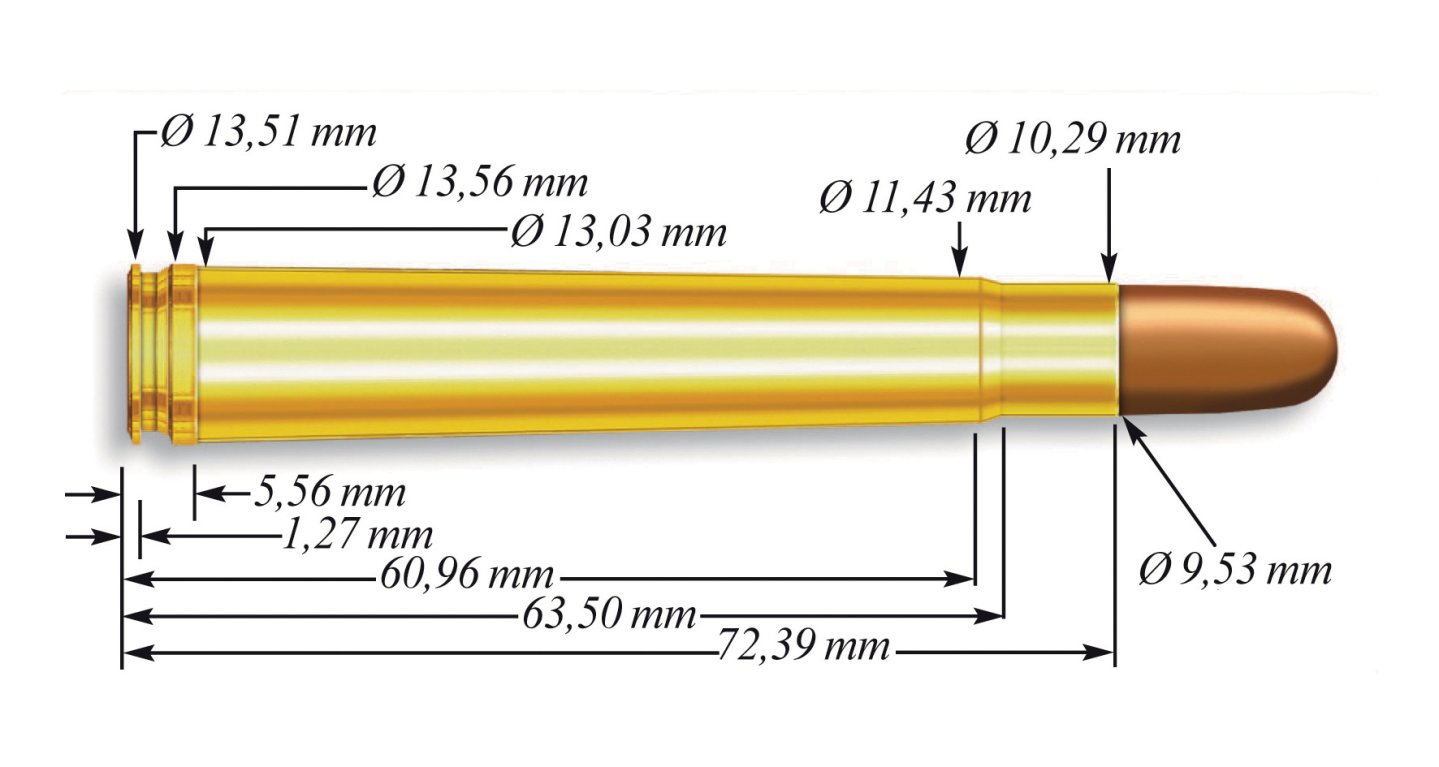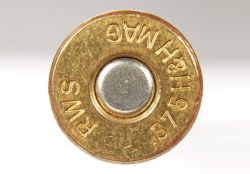
Let me start with one of the greatest in our profession, John Howard “Pondoro” Taylor, who argues in his 1948 classic “African Rifles and Cartridges” that the .375 Holland & Holland Magnum is the best medium-caliber for hunting African game. A clear statement, which many big game hunters on all continents related to.
The .375 Nitro Express Belted Rimless Magnum, developed by Londonʼs Holland & Holland fine armory was introduced in 1912. That same year, it started its triumphal procession as “.375 Holland & Holland Magnum”, especially in the African continent.
Limits of the .375 caliber?
The “.375 H & H” is still one of the most popular big game rimless cartridges ‒ often copied, rarely surpassed. In parallel to this well-known African cartridge, there was the somewhat weaker .375 Holland & Holland Magnum Flanged Nitro Express. This rimmed version for drop-barrel rifles is today casually referred to as the .375 Flanged. In the last decades of the 20th Century, it declined in importance because it was possible to use firearms design with improved extractors or ejectors, that enabled the easy use of rimless cartridges in drop-barrel rifles. Fortunately, the .375 Flanged has experienced a renaissance for several years now.
For me as well, rimmed cartridges belong with drop-barrel weapons and falling-block rifles, especially for those that go after dangerous Big Five (elephant, buffalo, lion, leopard and rhino) game and the big bears. The stable extractors or ejectors operate safer with rimmed cases.

The spring-loaded extractor, which engages in the grooves of rimless cartridges, is certainly a technical weakness of the firearm. In scorching Africa, increased gas pressure or dust may cause the cases to grip into the firing chambers. As the hunter forcefully opens the weapon, there is a danger that the delicate extractor is damaged.
Such an occurrance can have fatal consequences when chasing buffalo or lion. Here’s a first-hand experience: during a hunt in Burkina Faso, a professional hunter was after the buffalo of a fellow hunter. The PH carried an “affordable” side by side Express rifle without ejector of a famous German manufacturer chambered in .416 Rigby, a rimless caliber. In my opinion too, one of the best big-game rifles in caliber when hunting elephants and other big game. During the search, several shots were fired in short intervals...
... and then the cases became stuck in the Express’ barrels, red hot from the shots. It had to be forcefully opened. In doing so, the extractor was so badly bent that the rifle spent the rest of the season back in camp. (The buffalo was still on track.) Why take such risks? The range of rimmed cartridges is certainly big enough!
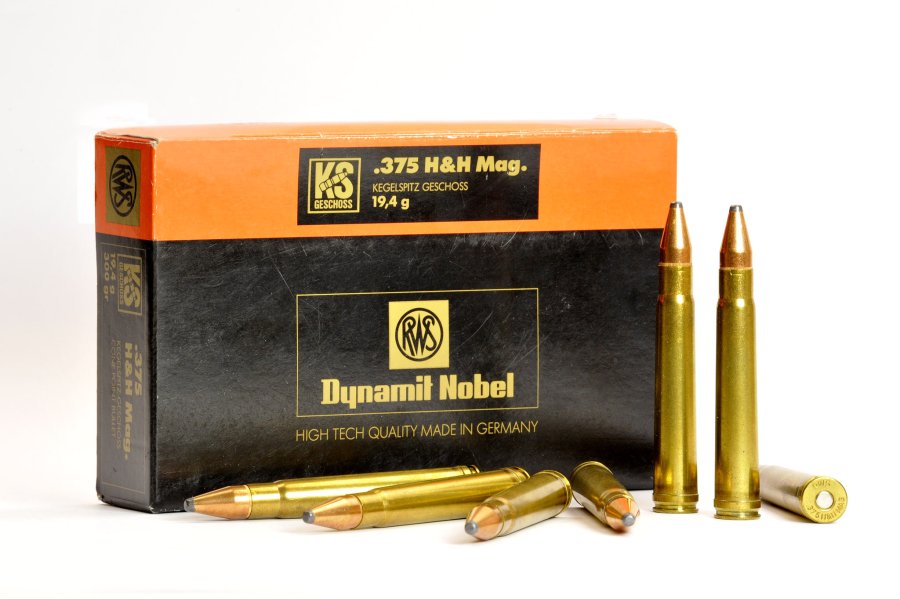
Yet another example, this one quite recent, also under the “first-hand experience” category. A hunter on the track next to mine fired a shot from his falling block rifle with a .243 Winchester Magnum. After the first shot, the spent case remained firmly “locked” in the chamber. There was no cleaning stock available to push out the stuck case.
Now, that could have been avoided with a cartridge rim. Therefore, when it comes to Express rifles in .375, I consider “the Flanged” as the right choice, even if it delivers a little less power (E0 around 5500 joules) than the rimless version (E0 a good 6000 J, both achieved with 300 - Grains bullets). “Flanged” factory cartridges are however rare. Wolfgang Romey of Woodleigh manufactures two calibers with 300-grain bullets (full and half jacket), the classic combination for Africa.

Non-reloaders should get a “lifelong” stock with the same lot numbers for their Express rifles. Otherwise, it can be expensive if the barrel does no longer shoot with cartridges of a different lot number ‒ which can be of the same caliber ‒ and must be trimmed again. After this short explanation on the .375 Flanged, let us go back to rimless .375 with belted case. It simply fits a “normal” Mauser action system with the skillful customization of a good gunsmith.
It would be better in my eyes, to use a Magnum system or one of the numerous nearly identical offshoots, like the Czech CZ 550 Magnum, or the recent Safari Express version of the Winchester Model 70, reviewed here. The other numerous American rifles with long, non-rotating extractor offer an alternative. While hunting “Dangerous Game”, I believe the “good old” Mauser-system (and close variants) with its long claw extractor is unsurpassed in terms of security and robustness.
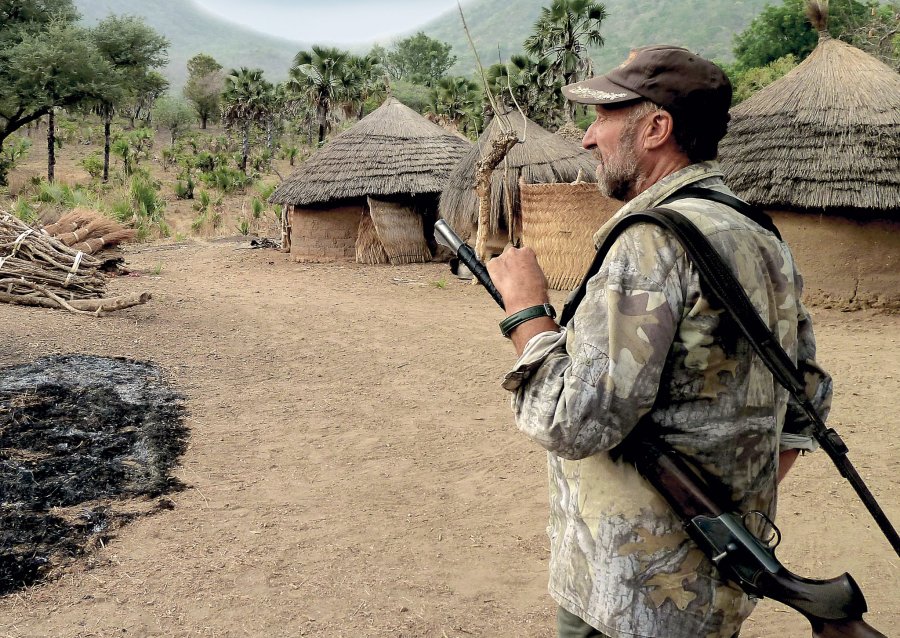
Here, I must confess that I have been using a Sauer 202 Alaska in .375 to my complete satisfaction for almost 20 years. I always took it along in my hunts in Europe, Asia, Africa and North America and never let me down. If there was anything “wrong”, it was always with me.

Only after 15 years, I ordered new magazines. The springs were worn out after all this time and the cartridges were not cleanly fed. Incidentally, changing magazines also has advantages: Fast loading and unloading as well as rapid magazine changes in critical situations... you should only do it in serious situations. Therefore, I advocate for fixed magazines while hunting dangerous game, even if I have ignored the principle with my Sauer. However, I have lost no magazines with this rifle.
Tradeoff - Part 1: Why is the .375 Holland & Holland ammunition for big game hunting in Africa so popular?
The .375 H & H is probably the most widespread and most shot cartridge for big game hunting in Africa. With corresponding calibers, it can be used on all types of game from kitzgroßen Ducker to Elephants. While hunting Duikers and other small antelopes, I usually favor .375 full metal jacket bullets. Game trophy damage is thus minimal. This is not only good for… cooking, but also for the taxidermist.
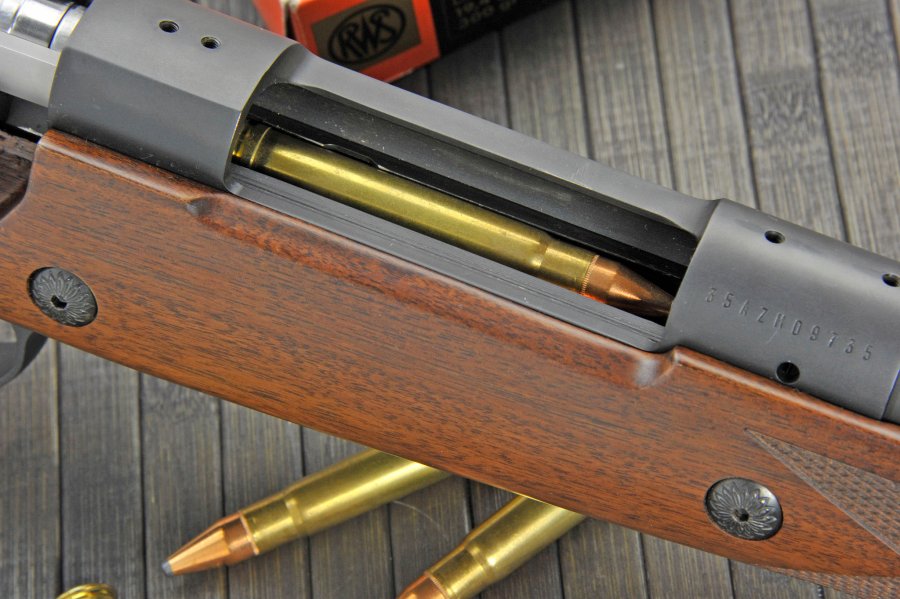
As in the second half of the last century there were major problems with the procurement of the old Express cartridges, people resorted to .375 (or .458 Winchester Magnum). There have never been supply shortages, and there was an ample range of weapons for this cartridge. Today, many professional hunters often use the cheap Czech CZ 550 Magnum as a backup gun.
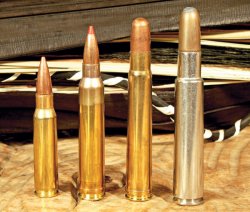
However, you have to shoot accurately if you wish to stop the attack of a wounded buffalo with a .375 in good time. In such cases, an Express in .470 Nitro or a Mauser bolt-action rifle in .416 Rigby Magnum is probably the better choice. However, you still get .375 cartridges at the smallest gun shops “in the middle of nowhere”. Moreover, you receive significantly more cartridges for the same money- more “bang for the buck”.
The days are gone in which individuals shot hundreds or even more than 1,000 elephants and buffalo. The shrinking wilderness areas in Africa require a responsible, careful handling of the game. However, why are African hunters well served with the .375 today? First, there is the already explained aspect of universal caliber. However ‒ and thus the .375 H & H as well ‒ presents a non-negligible disadvantage. Simply put, it could be described as follows: “Good for everything but ideal for nothing!”
With a muzzle speed of about 800 meters per second, the .375 H & H cannot be called a long shot cartridge. In addition, while hunting elephants and buffaloes, its approximately 6000 joules put it at the lower performance limit.
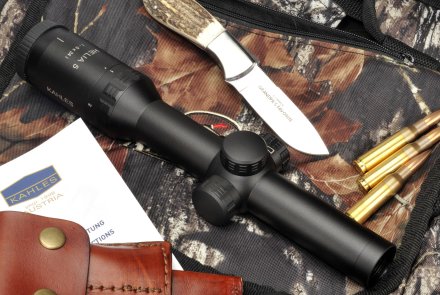
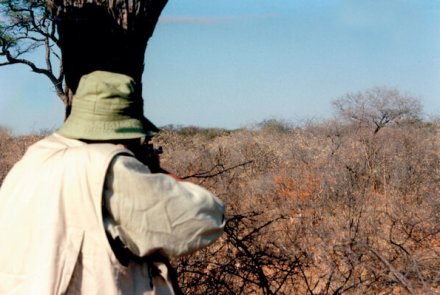
Those intending to use the .375 H & H as a universal cartridge, will require several scopes: a 50 class variable magnification glass like the Zeiss “Duralyt” 3-12x50 for long distances, good and reliable stalking binoculars for the jungle, and a compact, driven hunt glass for close range ‒ like the Kahles Helia 5 1-5x24i for hunts in the African bush.
R&D: Making it possible...
Reality is, that most hunters don‘t hunt elephants - many of them will most likely bring down a buffalo. So why should we acquire a special gun for this kind of game? Those adverse to risk, will shoot down their buffalo with the .375. Of course, this is only possible, if the hunters previously and intensively trained on the firing range. The safest shot on a wide standing pachyderm would be directly above the front leg in the lower third of the animal body. For the first shot, I use hard expansion bullets such as the Barnes X. With a heart or lung-sided hit, the buffalo will die after a short escape. The ideal shooting distance is under 50 meters.
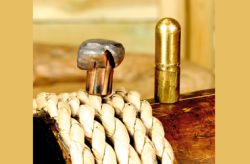
Beware of horned or semi-horned stationary animals. If you hit only one of the lung lobes of the buffalo (or elephant), it will be a long search afterwards. These trophies are often lost ‒ even the “Homo sapiens” manages to heal from a single-side lung hit with military full metal jacket bullets.
Shoot while the game is on the run and visible. Therefore, your first shot should be quite close! For the second one, most use full-jacket or solids bullets on escaping horned animals due to their superior penetration power. In these shots, even in frontal charges, one is “underserved” with the .375. As it is, one cannot always hit the brain or spine.
Shoot while the game is on the run and visible. Therefore, your first shot should be quite close! For the second one, most use full-jacket or solids bullets on escaping horned animals due to their superior penetration power. In these shots, even in frontal charges, one is “underserved” with the .375. As it is, one cannot always hit the brain or spine.
In fact, hardly anyone still hunts elephants and other dangerous game on his/her own, and the accompanying PH should control the backup rifle. Anyone that is however “buffalo possessed”, and I know some who happen to, will at some point put their hands on a rifle in one of the many “4 calibers”. Be it for example a .416 Rigby. In a bolt-action rifle with a Mauser Magnum system or an Express rifle in .470 Nitro. For elephant hunting , full metal jacket bullets or solids are required.
Tradeoff - part II: Don‘t forget the .375 is not a longrange caliber
Now, the second disadvantage of the .375 is that it is not a real long shot cartridge. In plainsgame hunting in open areas, such as on Springbok in Namibia, one occasionally shoots at 300 meters and further. Here, a rapid .300 caliber seems a better option. Most hunters, however, shoot under 200 or 250 meters at the most. Up to these distances, the .375 is a suitable and powerful option.
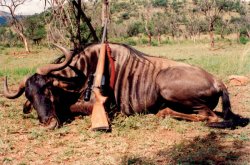
For hunting large animals such as Elands (800 kilograms live weight) or Roans (Roan, weighing up to 300 kilograms), I consider it a perfect choice, and the same goes for both big cats, lions and leopards. I have successfully hunted black bear and grizzly, strong red deer and wild boar in Europe, and moose in Canada. For trophies over 200 pounds, the effect of deformation bullets that hardly lose weight, is simply ideal. Its power is almost that of the 9.3 x 64 hence they also may be used on strong local deer. The 9.3, however, presents the non-negligible disadvantage that it is not approved in many African countries for Buffalo & Co. Minimum caliber there is 9.5 mm, i.e. .375.
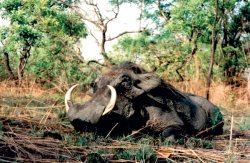
For lion hunting, theorists recommend the soft “Lion Load” by A-Square. Nonetheless, all professional hunters with whom I have spoken about it and the regular guests hunting lion, consider it too soft. On the other hand, since I have just killed a lion, I can barely state my opinion on the matter. I have to say though that I captured a Kuder with my .416 Rigby (410 Grains Woodleigh softpoint by Romey). The high chest shot through shoulder bones and spine was not wasted at 70 steps!
What would have happened with a “Lion Load” in .375 Holland & Holland, not to mention in case of a frontal charge of a wounded animal? “Use enough gun!”, that is, a decent caliber and appropriate loads. One could say this in conclusion. Soft disassembling bullets are the wrong choice for big game hunting.
A little bit of history: 100 years and still going strong ‒ the .375 H & H

In 1904, Henry Holland received a patent for a rimless and belted cartridge in .375 caliber: the .400/.375 Express. This cartridge was held under the proprietary name .375 Veloplex. Unlike often told, the belt should not be used to reinforce the sleeve but to prevent problems in the first place during feeding of the cartridge from the magazine. Moreover, the sleeve forms its headspace above this ring.
Veloplex, however, could not be deployed as a big game cartridge. Afterwards, the appearance of the 9.5 x 57 mm Mannlicher-Schönauer ended the “Big Game” ambitions of Veloplex. The powerful beltless cartridge, with almost the same bullet diameter (.375 = 9.525 mm), spread rapidly, especially in the British colonies on the African continent. This development was also helped by its great availability for the cheaper Mannlicher systems.
Henry Holland then designed the even stronger .375 Belted Rimless Magnum Nitro Express. In 1912, he presented the cartridge with a slightly and specifically modified Mauser M 98 bolt-action rifle, and took it as a .375 Holland & Holland on the market.
Almost at the same time appeared the weaker rim variant .375 Flanged Magnum Nitro Express (.375 H & H flangend). Holland had the foresight to sell the cartridge under the name “Holland & Holland”.
Finally all effort payed off: the big success made the Holland & Holland brand name world wide famous and successful.
